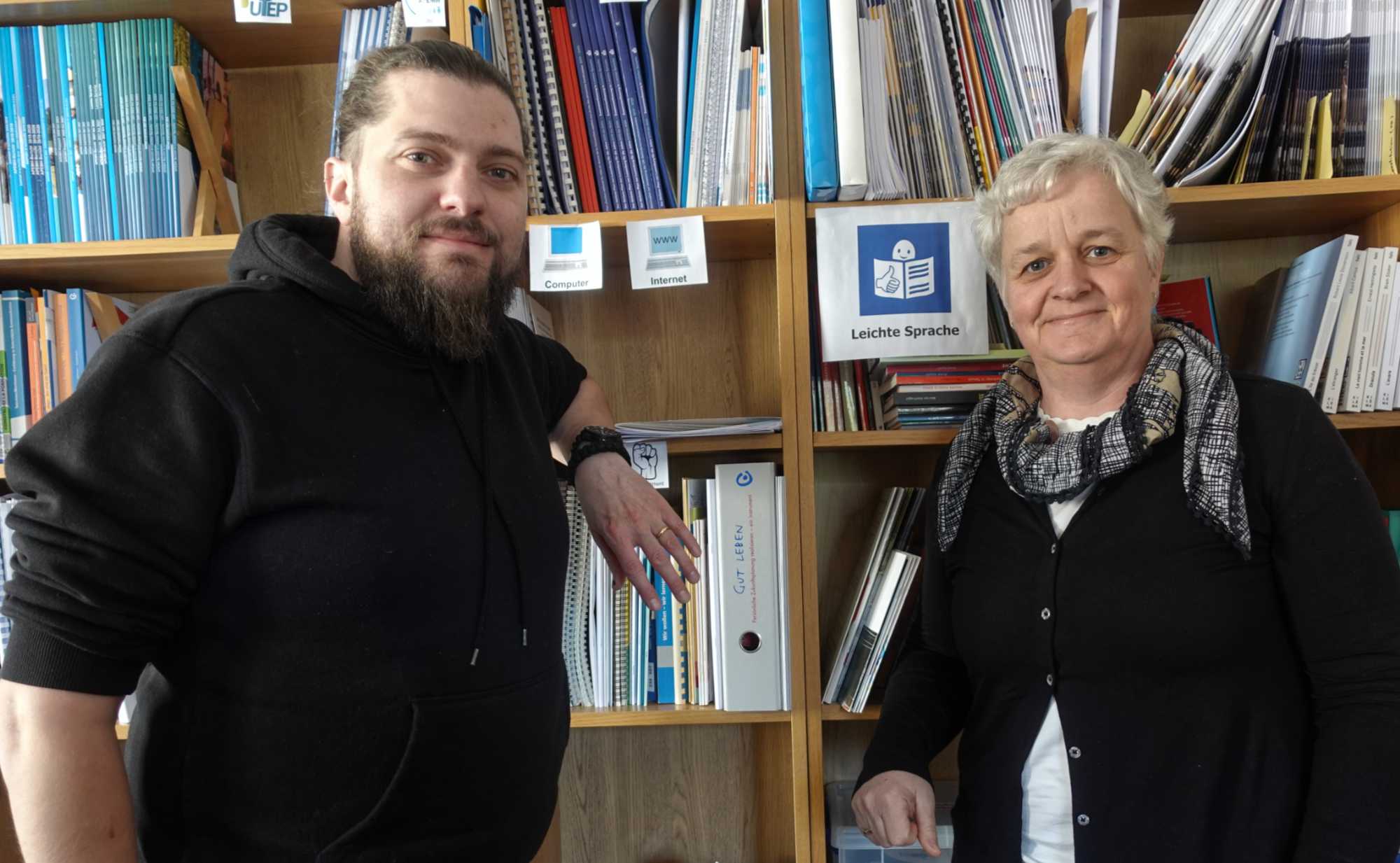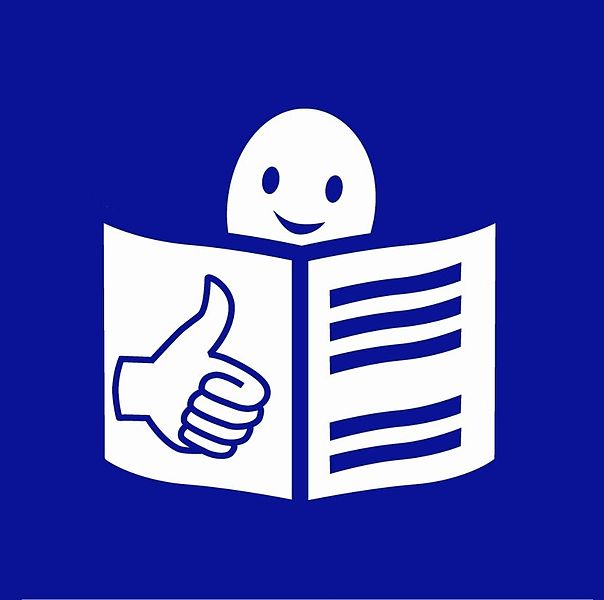Explaining in simple words isn't as easy as it seems
Since 2012, Klaro's mission has been to make documents, primarily administrative ones, understandable to everyone. This exercise, which goes beyond rewording, is far from child's play.
Tuesday, April 22, 2025
In 2011, Luxembourg signed the Convention on the Rights of Persons with Disabilities. A year later, Klaro, the Competence Center for Easy Language, was born. Today, three people work there part-time. Their main mission: to inform, raise awareness, and train in Easy Language.

Easy Read (leichte Sprache in Germany or its French equivalent FALC) goes beyond a simplified version of a given text. It involves adhering to a set of rules proposed by Inclusion Europe. These rules can be refined based on the nuances and specificities of each language.
What do these rules say? Some examples: one idea per sentence, short sentences, bulleted lists, examples from everyday life, no metaphors, abbreviations, or hyphenations, no difficult words unless they are clearly explained, preferring positive over negative expressions... In addition to these writing rules, there are also other specific principles for page layout and structuring information, the Web, and even videos.
An administrative document is generally written at a language level of B2 to C1
, explain Christopher Schmitt and Béa Brosius. Easy Language is equivalent to an A1 language level
, or the level of a basic user. This allows people with intellectual disabilities to understand the information in front of them. It also offers the same opportunity to people who are not comfortable with French or German
, adds Ms. Brosius.
Beyond rewording
But the process cannot be summed up as a translation: The choice of words and turns of phrase is not everything. You may have superfluous elements in a brochure that don't provide any information in the context of the subject, and conversely you may be missing elements of context. More than simply reformulating, it's a question of optimising the initial text with a view to the purpose for which it is intended
, explains Georg Ernst.
An example: Klaro released a guide during the last election. It showed how to vote. If a mistake is made when marking the ballot, citizens can feel helpless or even scared. We wanted to clarify this situation to reassure and provide all the information
, says Schmitt.
An Easy-to-Read document generally takes up more space and more pages than the original version: sentences are short, one sentence per line should be used if possible, the text has more breathing room with more generous line spacing, and the font size is sometimes larger. Beyond the text content, it is just as important to structure your document well, to choose meaningful photos and appropriate pictograms
adds Mr. Schmitt.
Klaro is the benchmark in Luxembourg for learning this way of writing and translating ideas: numerous workshops and coaching sessions are held at their office at the castle of Bettange-sur-Mess, as well as at INAP, to encourage the public administration to embrace this approach. However, Klaro is not restricting its offer to the public sector: the European Accessibility Act, which requires, for example, products to be accompanied by instructions in an easily understandable language, comes into force at the end of June and should see an influx of new customers.
How does it work?
Case study: you have attended the Klaro training course and would like to write your first Easy-to-Read content. Once you have finished your work, you can send it to Klaro and wait for it to be examined by the proofreaders in the ‘isie’ workshop. These proofreaders are people with intellectual disabilities, who are paid for their work. For the most part, they are able to read ‘leichte Sprache’, i.e. an Easy-to-Read text written in German. German is easier for Luxembourgers. People with hearing disabilities also use Gebärdensprache - German sign language. But given the country's multilingual situation, we recommend two versions, in Leichte Sprache and in FALC, of the same text
, says Ms Brosius, but it all depends on the target audience: they may understand neither French nor German
.
 An exchange can take place if the content remains cryptic in the eyes of the verification group. Suggestions for reformulation are regularly put forward. At the end of this process, if the content has indeed been checked by a workshop and complies with the rules, it can be labelled with the Inclusion Europe ‘Easy to read’ logo.
An exchange can take place if the content remains cryptic in the eyes of the verification group. Suggestions for reformulation are regularly put forward. At the end of this process, if the content has indeed been checked by a workshop and complies with the rules, it can be labelled with the Inclusion Europe ‘Easy to read’ logo.
There is no obligation to work through Klaro and the isie workshop. However, a company based in Germany or France is unlikely to adopt the range of specific words used on a daily basis in the Grand Duchy (e.g. “Formatioun” is preferable to “Weiterbildung”, “Chamberwahlen” to “Parlamentswahlen”, or “handy” to “smartphone”).
Klaro also creates a number of Easy-to-Read document templates, such as housing contracts and payslips, which are usually full of abbreviations. These templates are freely available.
While Easy-to-Read content is now available on guichet.lu, there is still a huge amount of work to be done considering all the information currently produced by the public administration. Priority should be given to all practical information
, says Ms. Brosius.
Rules for Easy-to-Read op Lëtzebuergesch coming soon
In addition to these tasks, Klaro is working with the Zentrum fir d'Lëtzebuerger Sprooch to draw up rules for Read-to-Read Luxembourgish: these should be ready by the end of the year. It's a growing demand
, explains Ms Brosius, who believes the challenge is an ambitious one, given that the spelling of the language has not often been learnt at school, which inherently creates a barrier.
Klaro's other projects include Accessilingua, an artificial intelligence-based solution that provides a FALC / leichte Sprache version of source content. Following a call for projects launched by the Ministry for Digitalisation, one candidate was selected last year. The initial results are promising, according to Mr Schmitt, although this is only a first step: the document will have to be proofread before it can be sent to the isie workshop. Initially, this programme will only be available to government bodies. But Klaro hopes that it will eventually be open to the general public.
